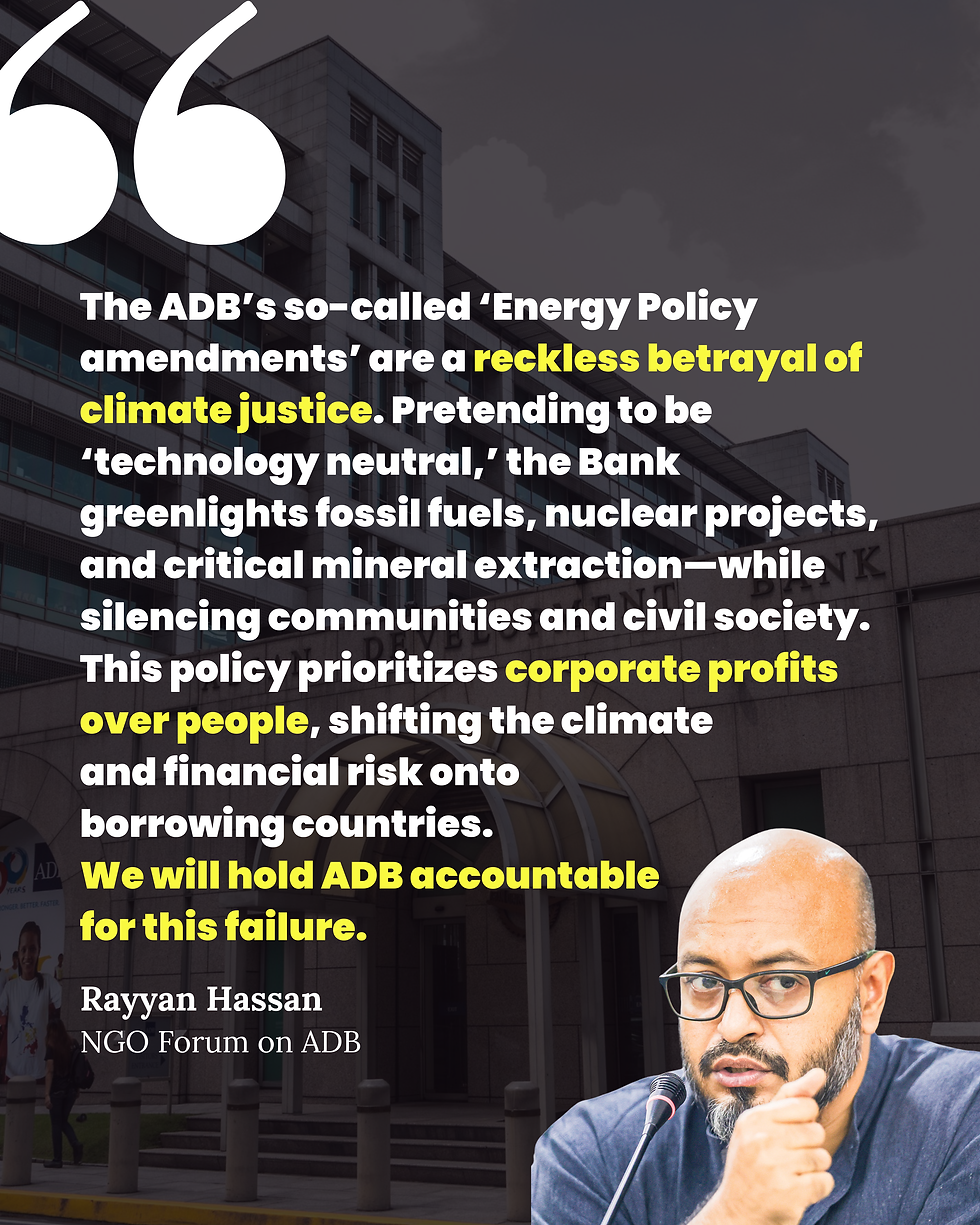Voices of the Affected | Stories of Development
- NGO Forum on ADB

- May 2
- 3 min read

"Voices of the Affected: Stories of Development" is an exhibition that shines a light on the unseen and often untold consequences of large-scale development projects financed by the Asian Development Bank (ADB). Hosted in Milan, a global center of art and culture, the exhibit presents a powerful collection of artifacts, images, and stories that showcase the environmental, cultural, and social impact of these projects on local communities.
Through these artifacts, the exhibition challenges conventional development narratives, urging the global community to rethink the true costs of progress. The pieces, carefully curated from ADB-funded projects, give a voice to those who have often been excluded from the decision-making process—the communities on the frontlines of development.
Key Features of the Exhibition
Personal Objects – These are items once belonging to displaced individuals, such as tools, clothing, and everyday objects, each carrying a story of loss and disruption caused by development.
Photographs and Documentation – Visual stories highlighting environmental degradation, forced relocations, and the adverse social impacts of development.
Testimonies – Audio and video recordings of community members sharing their lived experiences of resistance, struggle, and survival in the face of displacement.
Artworks – Pieces created by local artists expressing their grief, anger, and hopes for a better future in response to changes brought about by development projects.
Maps and Reports – Detailed visual displays of geographical and environmental shifts that accompany large-scale infrastructure projects, with a focus on displaced and affected communities.
Featured Materials
Geothermal Power Generation Project, Indonesia – A mural of an elderly woman from Dieng, symbolizing the enduring connection of local communities to their ancestral lands, now threatened by geothermal energy expansion.
Jamshoro Power Generation Project, Pakistan – A handwoven Ralli quilt representing displaced families from the Jamshoro coal project, embodying resilience but also the painful reality of lost homes and livelihoods.
Marcopper Mining Disaster, Philippines – A photograph commemorating one of Asia's worst mining disasters, underscoring ADB’s role in enabling environmental destruction and the ongoing suffering of affected communities.
The Story of the Teesta Dam, India – A narrative of displaced communities still reliant on kerosene lamps despite the promises of energy development, highlighting the failures of large infrastructure projects.
Regional Solid Waste Management Program, Maldives – Discarded EV batteries and plastic waste symbolizing the unaddressed challenges in waste management despite ADB’s investment in waste-to-energy technology.
Visayas Base-Load Power Project, Philippines – A dip net from Cebu, representing the lost livelihoods of fishers impacted by the coal-fired power plant, underscoring the environmental and health consequences of such developments.
Upper Elahera Irrigation Project, Sri Lanka – A small elephant figure symbolizing the uncertainty faced by local communities as a large-scale irrigation project brings land acquisition and inequities in water distribution.
The exhibition is designed to create an immersive experience for visitors. Multimedia installations and interactive displays will evoke emotional responses, allowing visitors to connect more deeply with the struggles faced by affected communities. Each piece is accompanied by concise explanations, offering context about the development projects, the specific violations, and the ongoing challenges these communities face. Visitors will also have opportunities to take action through petitions, campaigns, and workshops, supporting the call for greater accountability in development practices.
As you engage with the stories and artifacts presented in this exhibition, we invite you to reflect on the true meaning of development. While infrastructure and economic growth are vital, they must not come at the cost of the people and the planet. This exhibition encourages us to create a future where development benefits everyone, and the voices of those most affected are not just heard but acted upon.
This exhibition is not just a display of objects; it is a call for change. It is a plea for development that heals rather than harms, empowers rather than displaces, and listens rather than ignores. Join us in amplifying the voices of the affected, and help us reimagine a future where development serves the needs of all.

